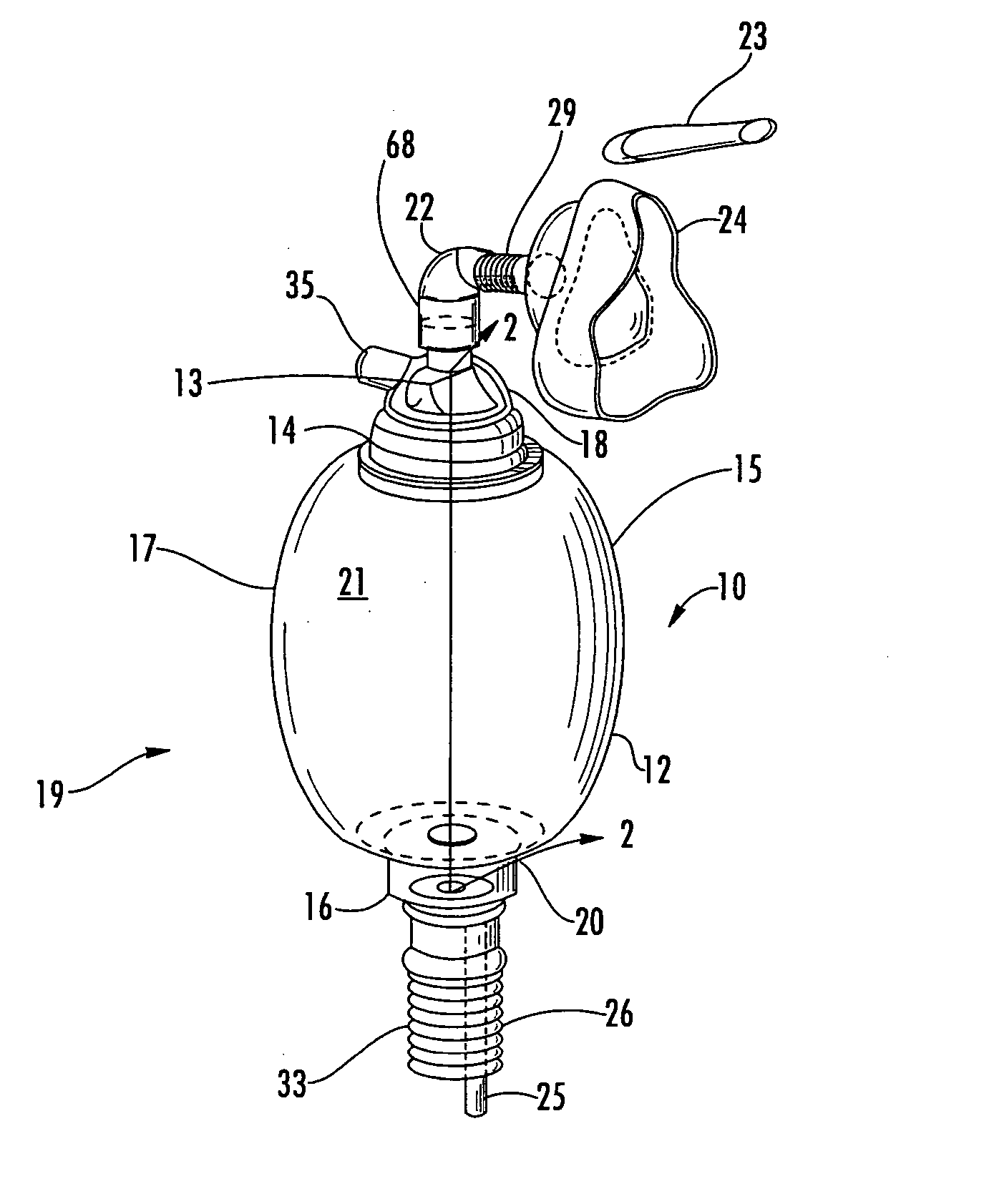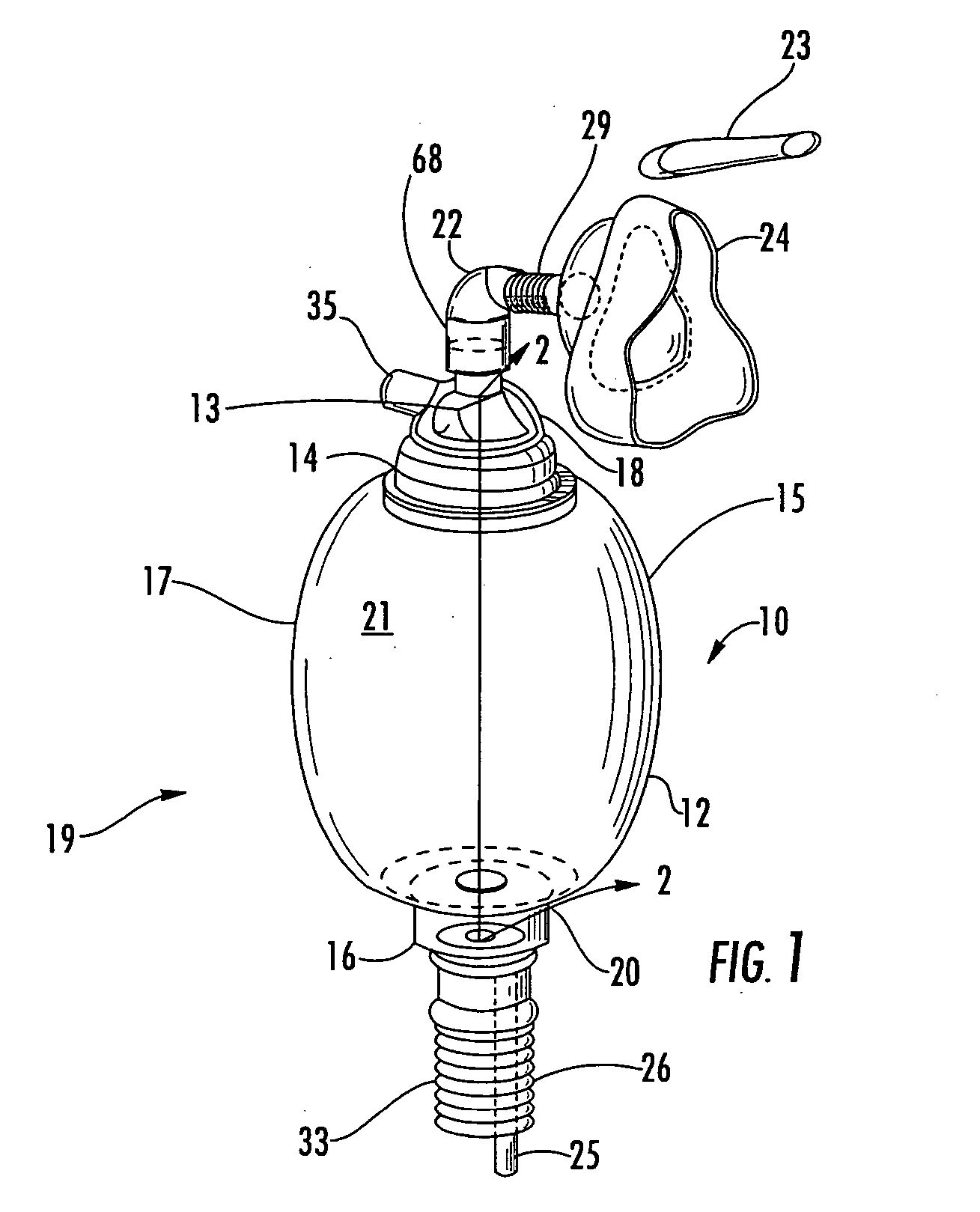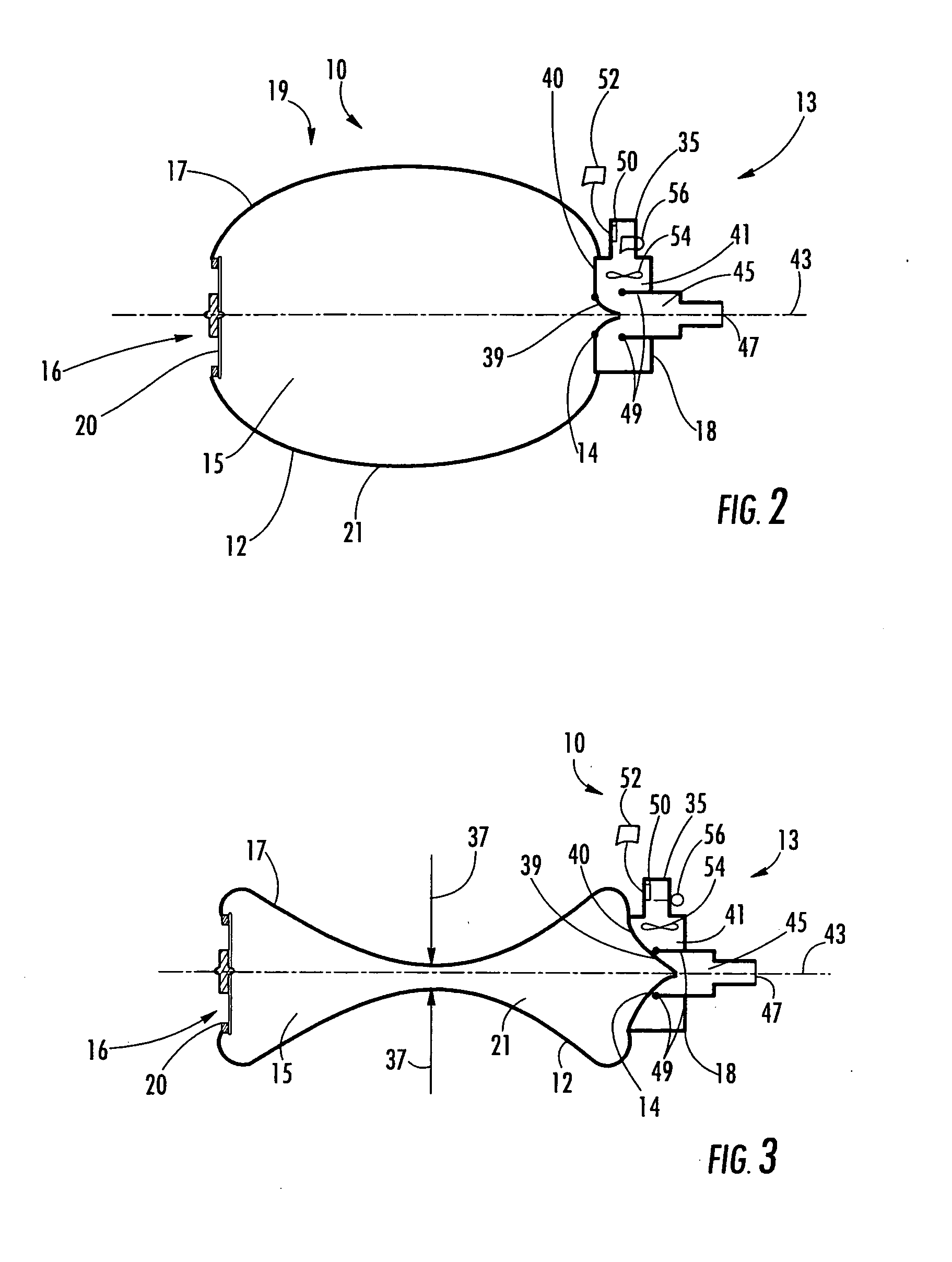Self-inflating resuscitation system
a resuscitation system and self-inflating technology, applied in the field of self-inflating resuscitation bags, can solve the problems of ineffective ventilation, inadequate ventilation, and compromised mask ventilation, and achieve the effect of confirming esophageal intubation
- Summary
- Abstract
- Description
- Claims
- Application Information
AI Technical Summary
Benefits of technology
Problems solved by technology
Method used
Image
Examples
Embodiment Construction
[0030] As shown in FIGS. 1-6, the present invention is directed to a self-inflating resuscitation system 10 for resuscitation of humans or animals, or both. The self-inflating resuscitation system 10 may include a self-inflating resuscitation bag 12 and one or more exhalation indicators 13 for indicating whether patients are adequately exhaling, and are therefore properly ventilated. The exhalation indicator 13 may be selected from an audible indicator, a visual indicator, an electronic indicator, or a combination thereof, such as an audible indicator and a visual indicator. The exhalation indicator 13 may be electronic or non-electronic. The audible indicator 13 may be any type of audible indicator 13 that would enable a caregiver to audibly ascertain whether a patient was exhaling. Examples of audible indicators 13 useful in the present invention include, but are not limited to, a whistle, such as, but not limited to a pea or pea-less whistle, or other appropriate whistle, a reed,...
PUM
 Login to View More
Login to View More Abstract
Description
Claims
Application Information
 Login to View More
Login to View More - R&D
- Intellectual Property
- Life Sciences
- Materials
- Tech Scout
- Unparalleled Data Quality
- Higher Quality Content
- 60% Fewer Hallucinations
Browse by: Latest US Patents, China's latest patents, Technical Efficacy Thesaurus, Application Domain, Technology Topic, Popular Technical Reports.
© 2025 PatSnap. All rights reserved.Legal|Privacy policy|Modern Slavery Act Transparency Statement|Sitemap|About US| Contact US: help@patsnap.com



